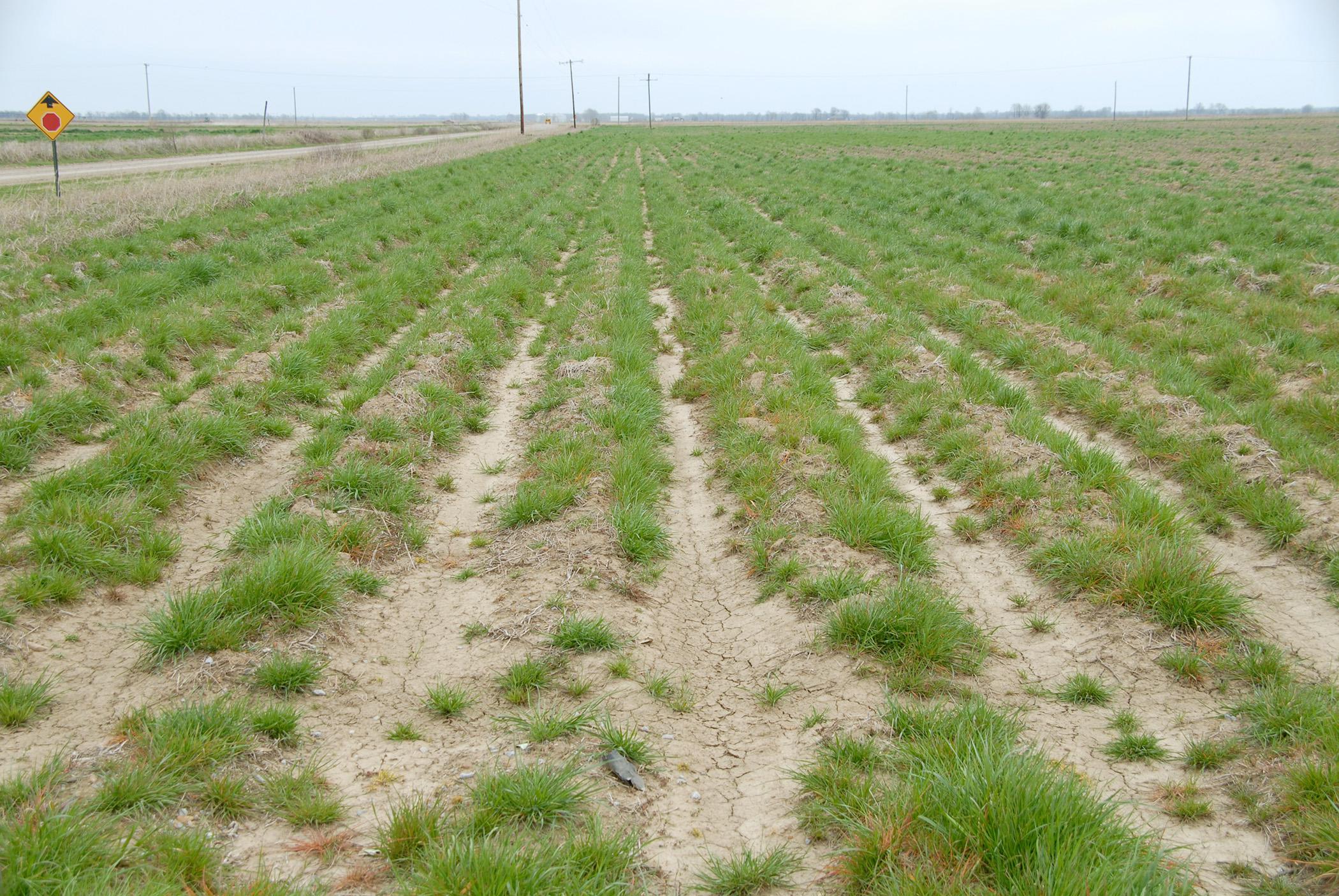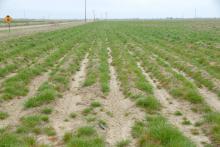Information Possibly Outdated
The information presented on this page was originally released on November 29, 2012. It may not be outdated, but please search our site for more current information. If you plan to quote or reference this information in a publication, please check with the Extension specialist or author before proceeding.
Fight resistant weeds with fall, spring attack
STONEVILLE – Research is backing producers’ intense efforts this fall to attack glyphosate-resistant Italian ryegrass using a variety of methods in attempts to limit the damage this troublesome weed can cause.
In 2005, Italian ryegrass resistant to the commonly used herbicide glyphosate was first identified in the state. Since then, it has been found in 31 Mississippi counties and is widespread throughout the Delta. This glyphosate-resistant weed emerges in the fall and grows throughout winter and early spring.
“Italian ryegrass has a wide range of adaptability to soils, and it is highly competitive for nutrients, water and sunlight,” said Jason Bond, a researcher and Extension weed scientist working out of the Delta Research and Extension Center in Stoneville.
“Plants that are emerging now can pose a serious threat to spring burn-down programs if allowed to grow until spring,” Bond said.
Mississippi Agricultural and Forestry Experiment Station work began in 2005 at the Delta Research and Extension Center to determine how to manage glyphosate-resistant Italian ryegrass. To date, researchers have screened 46 different residual herbicides for their effectiveness against Italian ryegrass. In 2010 and 2011, researchers tested the effectiveness of a two-phase approach: fall residual herbicide treatments followed by spring burn-down applications, where a nonselective herbicide is applied to fields before planting.
“Management of glyphosate-resistant Italian ryegrass requires a multifaceted approach,” Bond said. “Herbicide options are limited, and Italian ryegrass has a history of rapidly developing resistance to multiple herbicide chemistries.”
Plans must include fall control measures such as a residual herbicide or tillage, he said.
“The take-home message is that glyphosate-resistant ryegrass management must include both fall and spring control tactics,” Bond said.
Tom Eubank, assistant research and Extension professor in Stoneville, said a fall attack must be made on glyphosate-resistant Italian ryegrass.
“It’s usually a lot easier to kill any sort of weed when it’s small,” Eubank said.
A program that uses a non-glyphosate herbicide plus a residual herbicide tends to be the best management choice in the fall because this treatment kills the emerged weeds and keeps later ryegrass from emerging.
The primary reason why Italian ryegrass is difficult to control is that it is a clump-forming grass. Herbicides that rely on contact with foliage often do not reach all areas of the plant to provide sufficient control, and systemic herbicides are a better choice for control of this weed.
“Italian ryegrass is resistant to up to three modes of action, which refers to the process or activity within the plant that a herbicide interrupts,” Eubank said. “You should try to use an integrated pest management system. The more things you can do to try to control the weed, the less likelihood it will develop resistance to a particular herbicide.”
A weed can develop resistance as it is repeatedly exposed to the same chemical means of control. For example, when Italian ryegrass is sprayed with glyphosate, the majority is killed, but a plant or two may survive. Those that survive multiply, and the next generation has a few more plants that survive the next glyphosate burn-down. In time, the population that remains is completely resistant to this once-effective chemical.
“The integrated pest management program we recommend uses fall residual herbicides to help reduce the overall population and numbers,” Eubank said. “Fall tillage can also reduce weed numbers, but it is generally not as effective as residual herbicides. Producers should come back in the spring or late winter with an alternative herbicide program that attacks the plant using a different mode of action.”
Eubank said a diversified herbicide program is important to continue the fight against glyphosate-resistant weeds and prevent others from developing.





